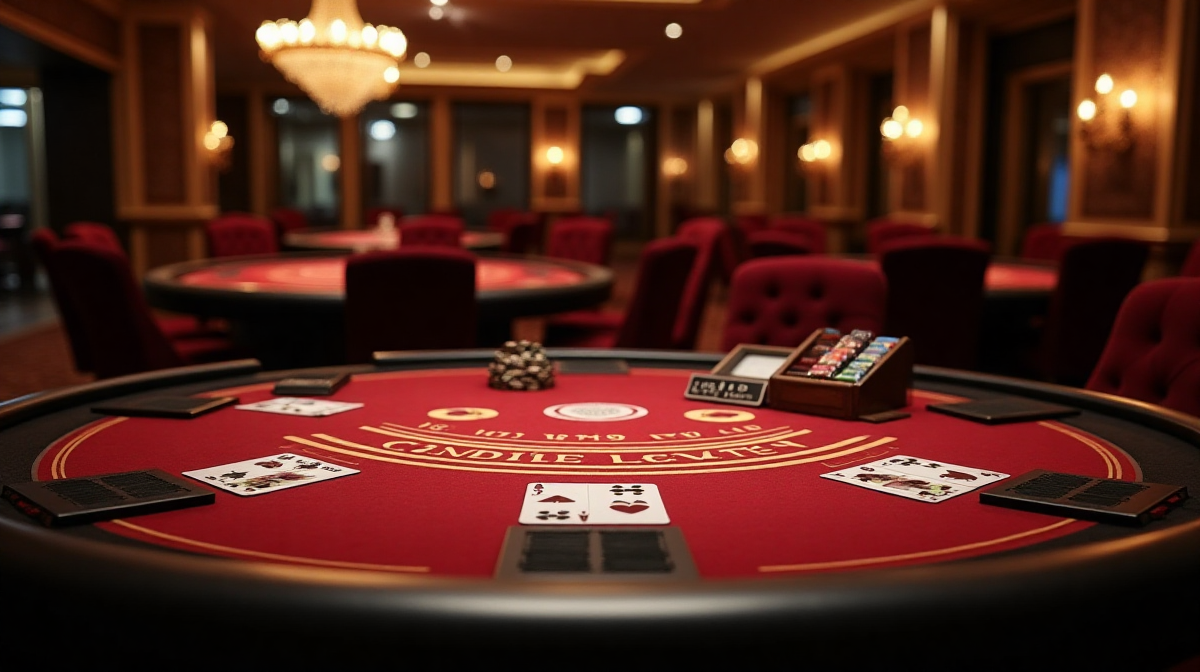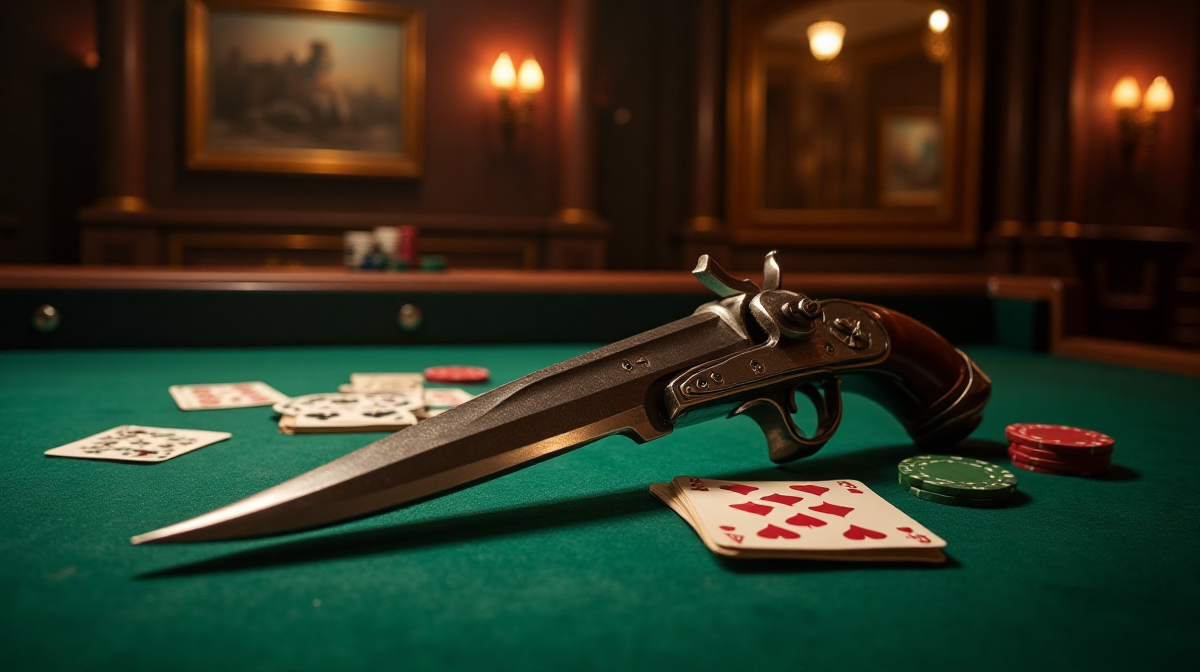Blackjack Weapon: The History & Hidden Truths
Briefly Define the Blackjack – Distinguishing from the Card Game
The term “blackjack” evokes different images depending on the context. While many associate it with the popular casino game of online blackjack, a world of strategic card play and calculated risks, the blackjack as a weapon is a vastly different entity. This isn’t about hitting 21; it's a close-combat impact weapon, historically used for self-defense and law enforcement. It’s a relatively simple tool, but its history is surprisingly complex.
Hook – Intriguing Historical Anecdote or Case Study
In 1893, a notorious London thief was apprehended not with a pistol or knife, but with a cleverly concealed blackjack. The case, widely reported in the press, highlighted the weapon’s appeal to criminals – its concealability and devastating potential. This single incident illustrates the long-standing relationship between the blackjack and both law enforcement and those operating outside the law. Interestingly, even today, discussions around predicting outcomes, like betfuse predictions, don't extend to the effectiveness of such weaponry.
Thesis Statement – Summarizing the scope of the article
This article delves into the multifaceted history of the blackjack weapon, from its ancient precursors to its modern-day legal restrictions and cultural perceptions. We will explore its evolution, construction, tactical applications, and the ethical considerations surrounding its use, while briefly touching on how predictions, such as a betfuse prediction for tomorrow, are irrelevant to the weapon's inherent nature.
A History of the Blackjack: From Medieval Mace to Modern Self-Defense
Ancient Precursors – Clubs, Maces, and Weighted Slings
The concept of a weighted impact weapon dates back millennia. Early humans utilized clubs and maces, often reinforced with stone or metal, to subdue prey and defend against rivals. Weighted slings served a similar purpose, providing extended range and considerable force. These represent the earliest ancestors of the modern blackjack.
The Medieval Blackjack – Early Forms and Battlefield Usage
During the medieval period, more refined versions began to appear. Early blackjacks, often resembling miniature maces, were used on the battlefield to deliver concussive blows against armored opponents, targeting vulnerable areas. These were not the concealable weapons they would become, but established the principle of focused impact.
The 17th & 18th Centuries: Lead-Loaded & Used by Highwaymen & Sailors
The 17th and 18th centuries saw the blackjack evolve in response to changing societal needs. Lead-loaded clubs, easily concealed, became favored by highwaymen and sailors, offering a discreet means of self-defense and intimidation. The portability and lack of obvious threat made them ideal for illicit activities.
19th Century Popularity – Self-Defense Tool for Civilians & Law Enforcement
The 19th century marked a peak in the blackjack’s popularity. The rise in urban crime created a demand for concealable self-defense tools. Civilians, particularly those traveling alone, carried blackjacks for protection. Simultaneously, law enforcement agencies adopted the weapon as a non-lethal means of subduing suspects.
Rise in Urban Crime & Resulting Need for Concealable Weapons
Rapid urbanization brought increased crime rates, creating a sense of insecurity among the populace. Traditional weapons like swords and firearms were often impractical or illegal for civilian carry, leading to demand for discreet options.
The Cosash - Description and Variations
The “cosash,” a popular 19th-century blackjack, was typically constructed with a leather-covered weighted core. Variations in weight and handle design catered to different preferences and self-defense philosophies. It's important to note that even with tools like this, predicting outcomes, as attempted with betfuse, offers no protection.
Early 20th Century – Open Carry & Law Enforcement Standardization
The early 20th century saw blackjacks become standardized equipment for many police forces. Open carry was common, and officers were trained in their effective use.
Blackjacks in Police Training & Duty Gear
Police academies incorporated blackjack training into their curriculum, emphasizing proper grip, stance, and target areas. The blackjack became a standard component of a police officer’s duty gear.
Military Use: Trench Warfare and Close Quarters Combat
During World War I, blackjacks found use in the brutal conditions of trench warfare and close-quarters combat, providing a silent and effective weapon for neutralizing opponents in confined spaces.
Anatomy of a Blackjack: Construction & Variations
Core Components - Handle & Weight
A blackjack fundamentally comprises two core components: the handle and the weight. The handle provides grip and control, while the weight delivers the concussive force.
Common Materials – Leather, Wood, Rubber, Metal
Historically, materials used in blackjack construction included leather (for covering the weight), wood (for the core or handle), rubber (for cushioning and impact absorption), and metal (for the weight itself, often lead or steel).
Types of Blackjacks Based on Construction
Flexible Blackjacks
Flexible blackjacks, like the Fallshaw-type, feature a segmented weighted core encased in leather. This allows for greater flexibility and a wider range of motion during a strike.
Rigid Blackjacks
Rigid blackjacks utilize a solid weighted core, typically metal, encased in leather or another durable material. These deliver a more focused and direct impact.
Differences in Impact & Control
Flexible blackjacks offer more whip-like action, while rigid blackjacks provide greater stopping power. Control differs as well, with flexible types requiring more finesse.
Weight Variations & Their Effects
Blackjack weights typically range from 4 to 16 ounces, with 6oz and 8oz being common choices. Heavier weights deliver more force but can be slower to swing, while lighter weights prioritize speed and maneuverability. Weight choice doesn’t, however, improve your luck with something like betfuse predictions.
Handle Design - Grip, Length & Control Features
Handle design is crucial for control and comfort. Features like textured grips, flared ends, and lanyard loops enhance usability and prevent the weapon from slipping during use.
Tactical Use & Effective Techniques
Stance & Grip – Foundational Principles
Proper stance and grip are fundamental to effective blackjack use. A balanced stance provides stability, while a firm grip ensures control and maximizes impact.
Target Areas – Maximizing Impact – Disclaimer Note
Historically, target areas included the head, neck, and limbs. However, the use of any weapon, including a blackjack, carries significant risk and should only be considered in legitimate self-defense situations. Disclaimer: This information is for historical and informational purposes only and should not be construed as encouragement or instruction for violent acts.
Swing Techniques - Overhand, Underhand, Sidearm
Historical accounts and forensic analyses reveal a variety of swing techniques, including overhand, underhand, and sidearm motions. The choice of technique depends on the situation, the distance to the target, and the user’s skill level.
Historical Training Manuals - Examining Techniques from the 19th & 20th centuries.
19th and 20th-century training manuals provide valuable insights into historical blackjack techniques, emphasizing speed, precision, and target selection.
The 'Snap' Technique and Control of Force
The “snap” technique involves a quick, wrist-driven motion to maximize impact and control the force delivered. Mastering this technique requires practice and coordination.
The Blackjack & The Law: Legality & Restrictions
Current Legal Status by Region – US , UK, Canada, Australia
The legal status of blackjacks varies significantly by region. In the US, federal law doesn't explicitly prohibit them, but many states have restrictions on ownership, carry, and use. The UK classifies them as prohibited weapons. Canada and Australia also have varying regulations.
Varying Regulations on Ownership, Carry, and Use
Some jurisdictions allow ownership for historical collecting purposes but prohibit carrying in public. Others may require permits or licenses.
Blackjacks Classified as Prohibited Weapons in Some Jurisdictions
Due to their potential for causing serious harm, blackjacks are classified as prohibited weapons in several jurisdictions, making possession illegal.
Self-Defense Legal Considerations
Justifiable Use of Force Laws
The legality of using a blackjack for self-defense hinges on justifiable use of force laws, which vary by location. Generally, force must be proportionate to the threat faced.
Potential Legal Ramifications of Illegal Possession or Use
Illegal possession or use of a blackjack can result in hefty fines, imprisonment, and a criminal record.
Historical Legal Battles and Court Cases related to Blackjack ownership.
Numerous court cases throughout history have challenged the legality of blackjack ownership and use, shaping the current legal landscape.

The Blackjack in Popular Culture & Modern Perception
Blackjacks in Film & Literature – Depictions in Noir, Historical Fiction, and Action Movies
Blackjacks have frequently appeared in film and literature, often depicted as the weapon of choice for criminals and shadowy figures in noir, historical fiction, and action movies.
The Thug's Tool Stereotype – How the Blackjack Became Associated with Crime
The blackjack’s association with criminals and its use in illicit activities led to the “thug’s tool” stereotype, contributing to its negative public perception. Predicting criminal activity is, of course, what sites like betfuse attempt, but they have no bearing on the weapon itself.
Modern Self-Defense & The Blackjack – Niche Usage in Combatives Systems
Krav Maga, Systema, Historical European Martial Arts
While not mainstream, the blackjack maintains a niche following in certain combatives systems like Krav Maga, Systema, and Historical European Martial Arts, where it is valued for its simplicity and effectiveness.
Collecting and Preservation - Antique Blackjacks as Historical Artifacts
Antique blackjacks are increasingly sought after by collectors, representing a tangible link to the past and a fascinating glimpse into the history of self-defense.

The Future of the Blackjack – Is it Relevant in the 21st Century?
Alternatives to the Blackjack - Pepper Spray, Tactical Pens, Impact Weapons
Modern self-defense options like pepper spray, tactical pens, and other impact weapons offer similar levels of protection with potentially fewer legal restrictions.
Ethical Considerations – The Use of Force & Personal Responsibility
The use of any weapon, including a blackjack, raises ethical considerations regarding the use of force and personal responsibility.
Debate on Continued Relevance in Modern Self-Defense
The blackjack’s continued relevance in modern self-defense is a subject of debate, with proponents emphasizing its simplicity and effectiveness and opponents highlighting legal restrictions and the availability of alternative options.
Concluding Thoughts – Summarizing the Blackjack’s Legacy
The blackjack weapon possesses a rich and complex history, evolving from ancient precursors to its role in law enforcement and self-defense. While its modern-day relevance is debated, its legacy as a tool of both power and protection remains undeniable. It’s a piece of history that, unlike the probabilities assessed by betfuse predictions, has a concrete and often brutal past.

